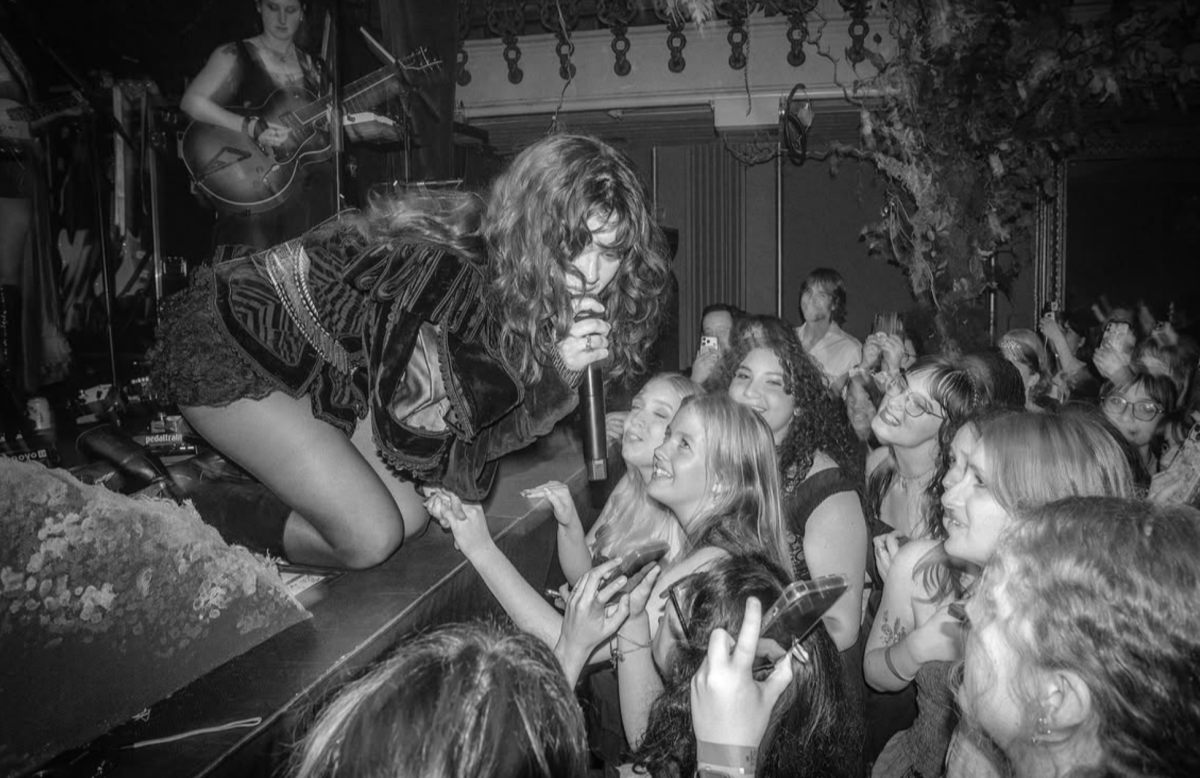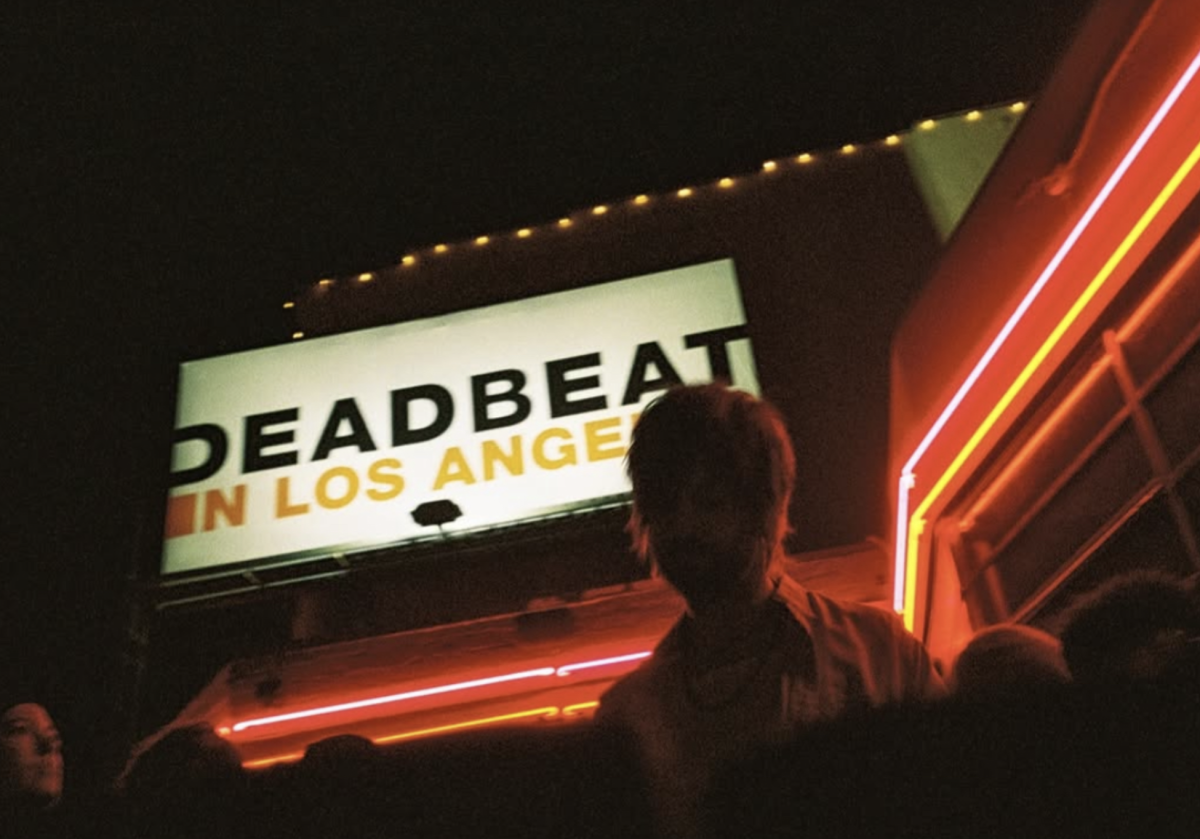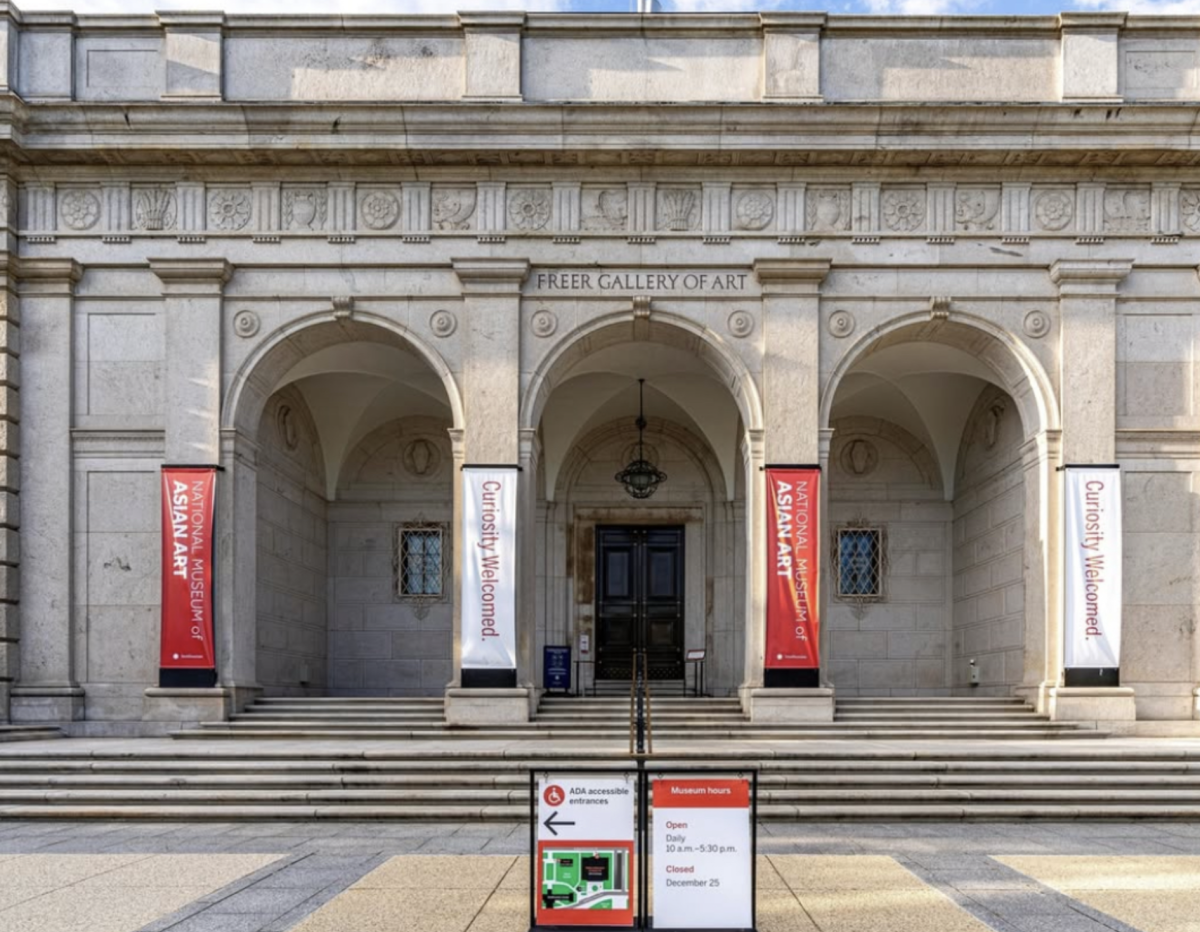
After the explosive success of their inaugural album “Prelude to Ecstasy,” it would have been easy for alternative indie British rock band The Last Dinner Party’s follow-up to feel like an opportunistic and rushed release. But “From The Pyre” completely evades this trap — in fact, the new album showcases the group’s growth while still adhering to the themes and theatricality established by its predecessor.
As both the album title and cover art suggest, “From The Pyre” fuses religious and medieval imagery with pop culture references and a thematic throughline exploring the violent and destructive power of love. The album marks a shift from the earworm indie pop sound of their debut toward a more arthouse and somewhat less coherent variety of sounds that unites upbeat, twangy guitar with the haunting intensity of choral vocals.
The album opens with the upbeat and percussive “Agnus Dei,” which explores the violent interplay of eroticism and fame. The lyrics of each verse cleverly build up to an emotional inflection point before being decimated by a curt ironic letdown, which is reflected in the periodic instrumental lulls. The song is the perfect opening to the album, simultaneously emphasizing the band’s theatrical playfulness and the emotional intimacy of their lyrics.
“Count The Ways” builds on this thematic exploration of the self-destruction that comes with a twisted relationship. Though the chorus recalls the first song’s buoyancy, the sound is overarchingly darker and more languid, hinting at the album’s overall musical inconsistency. This is reinforced by the third song, “Second Best,” which opens with a dramatic choral ensemble singing and quickly transitions to a brooding and repetitive rock, which then devolves into eerie crooning and increasingly intense overlapping voices.
This vast array of sounds does not detract from the album’s overall quality, though — it is a difficult feat, but The Last Dinner Party masterfully weaves together these warring auditory aesthetics, producing a dramatically diverse and exciting listening experience.
“Second Best” is a well-known track among fans because it was part of their tour setlist and one of the album’s leading singles alongside “This is the Killer Speaking.” This exciting, catchy song dramatically recounts the palpably rageful story of a crime of passionate revenge.
My favorite song, “Rifle,” starts with a sad, eerie opening that quickly explodes into repetitive, rageful belting and choral howling. This song also introduces the album’s secondary thematic focus: the position of women in society as mothers and caregivers. Its lyrics lament the godliness and violence of a mortal mother’s son, while allusions to biblical imagery amplify the solemn message. The haunting bridge, sung in French, establishes the all-powerful destruction of the figure of the son. With the contextualization of the following song, “Woman is a Tree,” the son’s destruction of nature seems to represent all men’s violence toward women.
The sixth song on the album, “Woman is a Tree,” opens with eerily reverberating cries and forges ahead with this mystical and macabre vibe, exploring man’s exploitation of women and nature. As established in the preceding song, women must support men: “Woman is the tree / Man a clinging vine on the branch.”
This theme continues into the next song, “I Hold Your Anger.” As women and as mothers, there is endless pressure to support men, especially one’s son. The narrator questions how this expectation came to be — “Nobody asked me to / But that is what I’m meant to do.” The anger she feels is palpable as the song intensifies, and she ultimately establishes that she was not made for this, but she does it nonetheless out of a place of care for her son.
Having realized the place of women in this world, the album returns to its initial exploration of love. Through a beautiful, soft acoustic piano accompaniment and saccharine vocals, “Sail Away” embodies the nostalgia of its narrator’s longing to return to her youth or to spend life endlessly with her former lover. The song builds to an angelic and repetitive choral outro, which hammers in the tragedy of a young love that is lost and cannot be regained.
The penultimate song, “The Scythe,” was the last of the album’s three leading singles. A striking image of the simultaneous transcendence and impermanence of love, “The Scythe” is less experimental in its composition but no less beautiful. The last song, “Inferno,” is slightly less straightforward and upbeat in a way that recalls “Agnus Dei,” closing out the album with a satisfyingly circular evocation of the brutality of love.
Overall, “From The Pyre” is an intense emotional experience and a beautifully melodramatic exhibition of artistic and storytelling excellence. The Last Dinner Party solidifies their place as an endlessly skillful and creative musical group with a clear artistic and thematic vision that they flawlessly execute throughout their discography.








